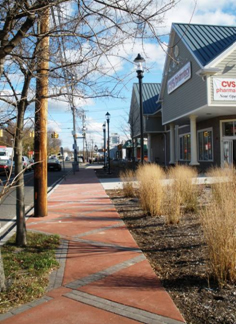Frequently Asked Questions
Please send questions to: info@rockypointsewerstudy.com
Kindly include your name and whether we may use it.
We will post answers to reasonable questions once a week.
************************************************
What are the basic components of a public sewer system?
Most of Suffolk's residents have an “on-site sanitary wastewater treatment and disposal system.” These systems include a septic tank or cesspool for solids settling, connected to leaching pools to allow clarified water to seep into the ground. Homeowners must periodically pump out their septic tank and less frequently install a new leaching pool once drainage slows down. Many of the on-site systems in established communities are more than 40 years old. A “public sewer system” includes plastic or iron collection piping with manholes every 300-400 feet to facilitate maintenance. Wastewater is conveyed to the treatment facility by gravity or with the assistance of a pump station. Pumping is required when collection systems are lengthy or changes in topography make “lifting” of sewage necessary. Treatment facilities have screening equipment to capture oversized materials and settling tanks to remove sand and grit. Biological treatment systems reduce the concentrations of pollutant such as nitrogen and organic compounds. Disinfection reduces effluent pathogen levels prior to its discharge to groundwater or into bays and harbors. Pollutant concentrations in wastewater effluent are regulated to protect our drinking water aquifers and coastal waters.
How was the Rocky Point Study Area defined?
The Town of Brookhaven engaged Vision Long Island in the fall of 2007 to conduct a public participation workshop to bring stakeholders (civic leaders, Town officials, local businesses, and residents) together to define the future of Rocky Point. The visioning produced conceptual plans and renderings to guide redevelopment and revitalization of the downtown business district. The process involved an examination of the retail and office mix, housing opportunities, public spaces, and infrastructure requirements. The community concluded that public sewers might be one of the community’s most significant infrastructure requirements. The Suffolk County Department of Public Works working with its Sewer Task Force recognized the community's planning efforts and allocated funding for a Sewer Feasibility Study for the downtown business area. The County defined the Study Area boundaries in consultation with the Project Steering Committee by considering zoning, land use, and potential for redevelopment. The Feasibility Study will identify the boundaries of a hypothetical Sewer District within the Study Area. Suffolk County Executive Steve Levy, along with Suffolk County Department of Public Works and the Sewer Task Force, was instrumental in having this project move forward.
What is a Sewer District?
A Sewer District is a legal entity formed by a County under Article 5-A of New York County Law. The law identifies the procedures for establishing a district, including the participation of the public through a permissive referendum, providing for input on fees and costs by the New York State Comptroller’s Office Department of Audit and Control. Villages, Towns, and the County can form Sewer Districts. The Sewer District has the ability to levy taxes to cover the costs associated with debt service and annual collection and treatment system operation and maintenance.
How are the Boundaries of a District Defined?
The boundaries of a district follow the boundaries of the parcels included in the permissive referendum or at the discretion of the County. District boundaries can also follow manmade features such as a roadways, railways, and power line rights-of-way. Once District parcels are identified, a formal survey and a metes and bounds legal description of the district is prepared and filed.
What are the Costs Associated with a Public Sewer System?
“Hard” costs include construction of the treatment plant and installation of the collection system: sewer piping, manholes and pumping stations. Land costs would be included where no treatment plant currently exists. If a treatment facility exists, there would be costs to increase its capacity to accept sewage from a new or expanded district. Additional costs would be incurred to properly abandon existing on-site systems and to connect parcels to the new collection system. “Soft” costs would include professional services for engineering, financial, and legal services associated with the planning and formation or expansion of a district (20-25 percent of the hard costs). Construction costs may be financed over 25-30 years and often at a low (subsidized) interest rate. If the newly formed District connects to an existing facility, there may be a connection fee ($30 per gallon if the new District connects to a County-owned facility), which may be amortized over 20 years. There are also yearly charges for the operation and maintenance of the collection system and treatment plant (labor, utilities, treatment chemicals, supplies, sludge removal and contracted services). In some cases, Sewer Districts not having a treatment facility can contract for treatment services with another Sewer District. This cost may be lower than if the newly formed District had it own facility as there are economies of scale when treating wastewater. All costs associated with the formation of the District are apportioned to the property owners in the District based on the assessed value of their property.
Do we need to have a sewer plant?
Development is limited by parcel size, local zoning codes, and the regulations of the Suffolk County Department of Health Services Division of Environmental Quality “Standards for Sewage Disposal Systems.” Agency regulations limit sewage flow inside the Rocky Point Study Area to 600 gallons per day per acre. Any use that would exceed this flow rate would be prohibited. Uses associated with high sewage flow rates such as restaurants, medical offices, and multi-family housing typically require access to a wastewater treatment facility unless they are situated on large parcels where the sewage flow can be offset by the available acreage. Development or redevelopment of downtown areas does not usually occur on large enough parcels to meet the County requirements and therefore requires connection to a public sewer system.
